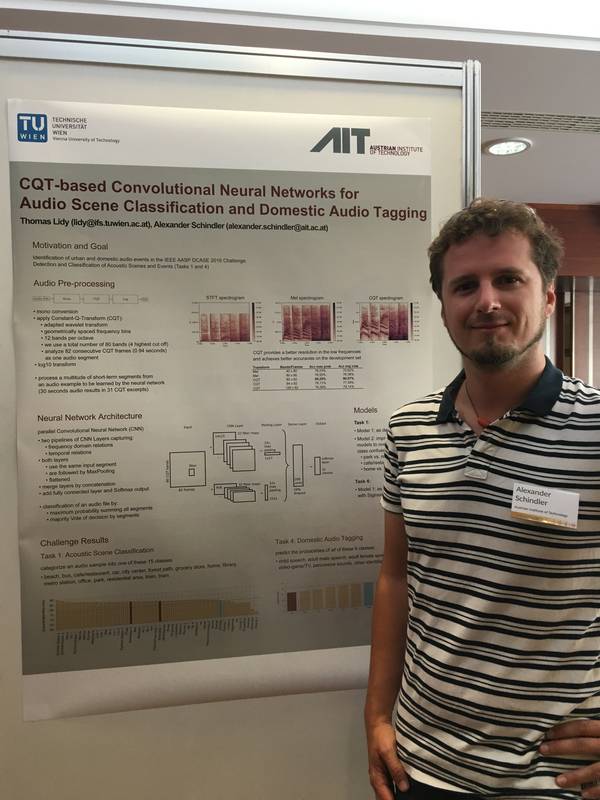The team of AIT scientist and Digital Insights Lab member Alexander Schindler and his colleague Thomas Lidy from the Vienna University of Technology look back to a very successful summer. The specialists in machine learning and audio analysis focus on the endeavoring task of making computers hear and understand sounds and music.
The latter comes from a strong passion to music and has many applications in digital humanities related research project such as the Europeana Sounds project where Alexander Schindler currently develops methods to find similar sounding audio files or to highlight the currently played measure of a song within the corresponding image of a scanned music score.
Recently the team focused on applying methods of deep learning to their tasks and after an intensive research period they tested their approaches by participating in international evaluation campaigns where they competed against other notable research institutes and universities.
With success! Not even have they outperformed this year’s contributions to 7 different music classification tasks at the annual Music Information Retrieval Evaluation EXchange (MIREX) , they also participated in the IEEE AASP Challenge “Detection and Classification of Acoustic Scenes and Events”. They submitted the winning contribution to the task of “Domestic audio tagging” and reached a respectable 14th place out of 35 contributions in the highly competitive “Acoustic scene classification” task. These dedicated tasks included the identification of ambient sound scenes such as “lakeside/beach” or “residential area”. Such information could be highly valuable for autonomous driving systems to set the systems to a more cautious state while passing an “urban park” where playing children could be more expected than on a highway. The “Domestic audio tagging” task focused on the identification of sound events in a daily household with all its interfering noise. Participants had to describe a scene using multiple labels such as “child speech”, “Video game / TV” or “Percussive sounds, e.g. crash, bang, knock, footsteps”. Reliable identification of domestic activities is relevant part of Ambient Assisted Living and Smart home automation systems and with their success Alexander Schindler and Thomas Lidy have proven that audio analysis is a trustworthy approach to take. This extensive experience gained with deep neural networks will further advance the targeted solutions in the upcoming FLORIDA project where AIT together in partnership with national and international legal authorities will develop investigative multimedia analysis tools to assist in post-attack scenarios - with audio analysis being a fundamental part of it.
Link:



